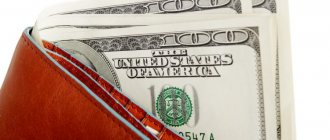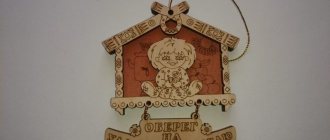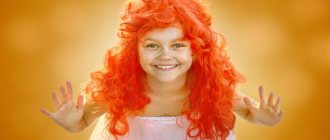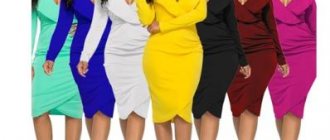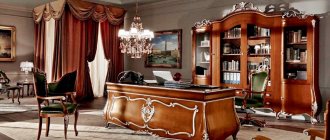Color is one of the most powerful tools in a designer's toolkit. With its help you can attract attention, create a certain mood, influence emotions, perception and behavior.
Did you know that among the reasons that motivate customers to purchase a certain product, 90% are due to color? Or that color magazine ads are 26% more likely to be noticed than black and white ones?
The conclusion is clear: using the right color will help you achieve success. But a natural question immediately arises: how to choose the right color? To answer this, you will have to analyze several important aspects:
- color associations
- differences in color perception between men and women
- problems associated with color vision impairment.
Black
Black is another very versatile color. It can be modern or traditional, exciting or relaxing. But if you use black as a contrasting color, that is, in a ratio of 1:6, 1:8 to the main one, you risk introducing drama and sadness into the perception of visual advertising materials by your clients.
Here is an example of a landing page well thought out in terms of colors - what do you associate these colors with? — https://cashflow-igra.ru
Color in marketing and business
The role of color in creating a corporate identity
When developing a brand philosophy, color takes center stage among other factors. Every color we see directly or indirectly implies something, and this helps influence the perception of a particular brand. Some colors go beyond individual brands, symbolizing entire industries, for example, blue for the tourism business, green for healthy eating, red for fast food.
There are no clear rules for choosing colors when developing a corporate identity. Some use colors that are familiar to their industry, while others, on the contrary, prefer to go against tradition, believing that this helps to attract attention more effectively. For example, Virgin America decided to change the traditional concept when developing its website and application. And although this may not be exactly what users expect from an airline website, it nevertheless attracts attention.
There's not even a hint of blue in the Virgin America iOS app.
Thus, an unexpected color choice can be an effective technique to attract users' attention to your company.
Color and Conversion Rate Optimization
How can you use knowledge of color theory and psychology to encourage people to click? Choosing the color of your call to action (CTA) button is one of the oldest aspects of the conversion versus optimization debate. For every person who argues that red is the best color for a button because it attracts the most attention, there is someone who argues that green is the best color because it is associated with safety and encourages action.
HubSpot presented the results of its marketing research (A/B test), which shows how the choice of color for the call-to-action button affects the number of registered users.
A/B testing is the most effective and frequently used marketing research method.
Although it was initially expected that the green button would perform better, test results showed that the red button received 21% more clicks. At the same time, HubSpot warned its users that the test results were somewhat subjective - perhaps the audience preferred red because it was the only saturated color on the site page.
The color of a button in itself does not affect its absolute effectiveness - what works well on one site may be ineffective on another. The claim that one color converts better than another is false because there is no universal best color. However, there are still some rules based on practical experience that help you effectively use color to your advantage. One of them is the use of a psychological principle known as the “isolation effect.” According to this principle, people remember better an object that stands out from the rest “like an eyesore.”
For example, if your website or app has a lot of green in its design, users will likely not pay attention to the green button, even though A/B test data has proven its effectiveness at another company.
Evernote web service. Their “It's Free” CTA button is buried because it blends in with the background. It gets lost on the page and users don't notice it.
Sometimes you need to change the visual hierarchy of colors on a page to highlight your call to action button. Contrast plays a very important role - if the color of the button does not attract the attention of a potential client, then there will be no registrations/sales.
A call to action (CTA) button really attracts users' attention when it contrasts in color with the rest of the page elements.
Color and usability
Design involves not only beautiful design, but also functionality and usability - perhaps the two most important principles for the work of any UX designer.
Color is a tool that helps direct the eye to the desired objects. Choosing the right color when designing an interface not only attracts users, but also improves the efficiency of the user interface.
Limit the number of colors
When using different colors in your design, you should strive for balance. The more colors you use, the harder it is to achieve balance. Using too many colors is a common mistake developers make. They may be trying to influence users in this way and convey as much information as possible, but this can be very confusing for people visiting the site.
No matter what color shades you use, too many colors create an unfortunate visual effect.
Interior designers follow a simple rule of 60–30–10, which also works well when designing websites. This timeless technique will help you choose a balanced color scheme: 60% should be the dominant color, 30% the secondary color and 10% the accent color. This ratio guarantees color balance and a comfortable transition of the gaze from one object to another.
The formula 60% + 30% + 10% is the key to balancing the colors used.
Availability of color perception
People perceive colors differently. Approximately 8% of all men and 0.5% of all women suffer from color blindness to some degree. The combination of red and green suffers most from color vision impairment. The only way to avoid problems is to try not to use this color combination.
Many colorblind people have difficulty distinguishing red from green.
Let's take a common situation as an example. Have you ever received a message that a form was filled out incorrectly - something like “Fields marked in red are required”? While this is not a big problem for users with normal vision, people who are colorblind may find this message upsetting.
Website developers use only two colors to fill out forms: red and green. But colorblind people cannot distinguish between the fields highlighted by these colors.
As stated in the W3C guidelines, colors should not be used as the sole visual tool for the following purposes: conveying information, prompting action and response, or highlighting a visual element. Following these recommendations, site developers should pay attention to some points: the response message about errors should be more informative, for example, like this: “The email address you entered is not available”; or perhaps you should add an icon next to the fill field to attract the user's attention.
Additional visual cues and built-in error checking help highlight an incorrectly filled field.
Are there a few ways you can test your UI for accessibility?
- The WebAIM service will help you check color combinations.
- Using the Adobe Photoshop graphic editor will help you correct images using Color Universal Design. This will ensure accessibility of graphic information for people with color vision impairment, including color blindness.
What the Research Says
The perception of color depends on personal preferences, upbringing and cultural characteristics of a person, but when it comes to shopping and interaction with a brand, there are also universal points:
- for 80% of users, color affects brand recognition;
- 90% of customers decide to buy based only on the color of the product.
Color helps a brand stand out and be remembered from its competitors. It awakens memories and affects a person’s emotional state. And each in his own way. Let's figure out what email marketers can do about it.
Red, orange, yellow
Red – importance, danger, attention.
Red is used in advertising products as an incentive to action. It makes a person want to do something. If we talk about the advertised product, then this will be a desire to buy. It is the color red that is called an advertiser’s best friend, as it allows you to quickly attract attention. But when using it, it is important to consider the scope of the company’s activities. For example, advertising a dental clinic in red colors would not be entirely appropriate.
Orange – optimism, a surge of strength and confidence.
Orange puts a person in an optimistic mood, creates a feeling of inner balance and harmony. It is also worth considering that it causes appetite. In ancient times, orange was considered the color of health, so it is optimal for advertising medicines and services in the field of education or health care. But orange is not associated with elitism, so a branded product in advertising with this color will look too affordable.
Yellow – sun, happiness, attention.
The color yellow is positioned in advertising as motivating communication. It reflects openness and sociability, has a balancing effect, helps reduce mental anxiety, and also “endows” the object with intelligence. This makes yellow an ideal color for advertising high-tech products, PR agencies, travel and advertising companies.
Making advertising taking into account psychology
The Altea advertising agency in Tver has been working in the field of advertising for a long time and regularly creates advertising layouts for a wide variety of products. You can contact us not only with a ready-made template. These can be your ideas and simple sketches, which we will finalize taking into account the advertised product.
We have various services, including advertising printing and production of interior advertising of various types and complexity. When choosing a color for a design, we take into account not only the meanings of different shades, but also the target audience, its age, interests and gender. This approach allows you to create the most effective advertising that will show really good results in attracting potential customers.
Light blue, blue, green, purple
Green – development, success, environmental friendliness.
Green color softens everything and reduces the severity of emotions. Its main effect is relaxing. Green is associated with nature, so it is relevant for health centers, dental clinics, veterinary hospitals, and environmental protection companies.
Blue – peace, feelings, harmony.
The color blue in advertising is used to set a person up for something sublime. It reflects friendliness and kinship of souls. Blue is also the color of peace and harmony. Therefore, it is suitable for all areas related to relationships between people.
Blue – trust, comfort, relaxation.
If you need to add more concentration, you should introduce blue into your advertising. It helps you not to get distracted by small things and directs your attention to something specific. It is very important that blue is never associated with negativity, which distinguishes it from red. In addition, it is very loved by men, who use variations on the blue theme much more often than women.
Purple – elitism, creativity, spirituality.
The color purple is used in advertising to create the effect of concentration. It helps a person to distract from unimportant trifles and concentrate on the main thing. Violet also stimulates solving creative problems. Therefore, if you want to emphasize the creativity of a product, you should use purple. But we must remember that men do not like him too much.

